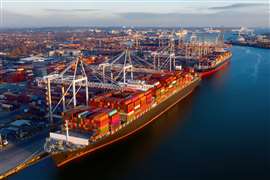New net working guidance
13 April 2015
Secondary protection while working above safety nets is the subject of a new guidance document issued jointly by FASET, the trade body representing the fall arrest and safety net rigging industry, and BCSA (the British Constructional Steelwork Association).
A collective and passive protection system, safety nets are used to save lives and reduce injuries on site by absorbing energy from a falling body. Rigged to the underside of the structure, they are normally used as the primary means of protection due to their close proximity to the working level. Accordingly, the use of an additional fall arrest system is not required.
If, however, as a result of a risk assessment, personal fall protection equipment (PFPE) is considered necessary, then the following factors must be taken into account says FASET:
Firstly, with teams of workers operating in close proximity to each other, fall restraint is generally not practicable and frequently creates additional hazards, including the risk of slips and trips.
Secondly, that fall arrest lanyards are not appropriate due to the lack of distance for them to be deployed effectively. In many situations, says FASET, they are likely to hinder rescue efforts from within the safety net in accordance with the agreed net rescue plan.
The guidance goes on to confirm that BS EN 1263-1 safety nets (greater than 35 square metres and 5 m minimum side length) are subjected to a type test involving 100 kg falling 7 m (6m plus an allowance for the height of the centre of gravity of a human). The nominal acceptable total fall energy is therefore 6kJ on a new net.
The number of workers protected by an individual safety net that complies with BS EN 1263 -1 & 2 must be contained within the capacity of the net. Therefore, for a 2 m maximum fall height and allowing 100 kg per worker (including tools), the recommended maximum number of workers over any section of the safety net is two.
If more than two workers are required over the same section, a specific risk assessment must be completed to determine the risk of more than two workers falling into the net simultaneously. If the risk is considered to be low, then more than two workers may be able to work safely above the safety net.
To increase safety, the use of a B-specification BS EN 1263-1 safety net should be considered, says FASET.






